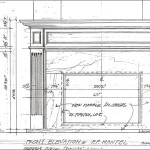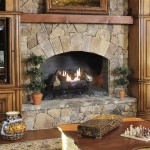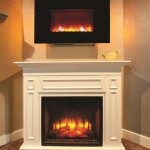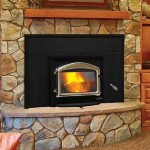Understanding Fireplaces Without Inserts: A Comprehensive Guide
The traditional fireplace, a staple in many homes for centuries, provides warmth and a focal point for gathering. This type of fireplace, often referred to as a fireplace without an insert, differs significantly from modern, more efficient fireplace systems that incorporate inserts. Understanding the nuances of a fireplace without an insert, its operation, benefits, drawbacks, and maintenance, is crucial for homeowners making informed decisions about heating their homes and ensuring safety.
A fireplace without an insert, in its simplest form, is an open hearth fueled by wood. It typically consists of a firebox built of brick or stone, a chimney designed to vent smoke and combustion byproducts, and a damper to control airflow. The basic principle of operation involves burning wood within the firebox, generating heat that radiates into the room. However, a significant portion of the heat is lost up the chimney, rendering this type of fireplace less efficient compared to modern alternatives.
The appeal of a fireplace without an insert often lies in its aesthetic qualities and the ambiance it creates. The crackling fire, the smell of burning wood, and the visual appeal of the flames contribute to a cozy and relaxing atmosphere. In many older homes, the fireplace is an integral part of the architectural design, adding character and historical significance to the property.
Key Point 1: The Mechanics of a Traditional Fireplace
The functionality of a fireplace without an insert hinges on a few critical components working in harmony. The firebox is the primary area where combustion occurs. It is constructed from fire-resistant materials, such as firebrick, designed to withstand high temperatures. The firebrick also helps to reflect heat back into the room, though its overall contribution to heating efficiency is limited.
The chimney serves as the exhaust system, drawing smoke and gases away from the firebox and releasing them into the atmosphere. A properly functioning chimney is essential for safe operation, preventing dangerous buildup of carbon monoxide within the home. The chimney's effectiveness is dependent on several factors, including its height, diameter, and the presence of any obstructions.
The damper is a movable plate located within the chimney, typically just above the firebox. It regulates airflow into and out of the fireplace. When the fireplace is in use, the damper is opened to allow smoke to escape. When the fireplace is not in use, the damper is closed to prevent drafts from entering the home and to minimize heat loss through the chimney. A poorly sealed or malfunctioning damper can significantly reduce the energy efficiency of the entire house.
The hearth, the non-combustible area extending in front of the firebox, serves as a protective barrier against sparks and embers that may escape from the fire. Local building codes usually dictate the minimum dimensions and material requirements for the hearth to ensure safety and prevent accidental fires.
Airflow is crucial for a fireplace to function properly. The fire needs oxygen to burn effectively. Thus, adequate ventilation in the room is essential. Additionally, the design of the firebox and the chimney’s draft characteristics play significant roles in maintaining a consistent and efficient burn.
Key Point 2: Efficiency and Drawbacks
One of the major drawbacks of a fireplace without an insert is its relatively low heating efficiency. Studies have shown that these fireplaces can be as little as 10-20% efficient, meaning that a large portion of the heat generated by the fire is lost up the chimney. This inefficiency arises from several factors, including the large amount of air required for combustion, the open design that allows heat to escape, and the natural draft of the chimney that pulls warm air out of the room even when the fire is not burning.
In addition to low efficiency, fireplaces without inserts can contribute to air pollution. The burning of wood releases particulate matter and other pollutants into the atmosphere, which can have negative impacts on air quality and human health. The amount of pollutants released depends on several factors, including the type of wood burned, the moisture content of the wood, and the efficiency of the combustion process.
Safety is another significant concern associated with fireplaces without inserts. Sparks and embers can escape from the firebox, posing a fire hazard. Creosote buildup in the chimney can also increase the risk of chimney fires. Creosote is a flammable substance that forms when wood smoke condenses in the chimney. Regular chimney cleaning is essential to remove creosote and prevent potentially dangerous fires.
Furthermore, operating a fireplace without an insert can be more labor-intensive than using other heating methods. Gathering, storing, and transporting firewood requires effort and storage space. Starting and maintaining a fire also requires time and attention.
While the aesthetic appeal of a traditional fireplace is undeniable, the practical limitations regarding efficiency, environmental impact, and safety must be carefully considered. Modern alternatives, such as fireplace inserts or gas fireplaces, offer improved efficiency, cleaner burning, and enhanced safety features.
Key Point 3: Maintenance and Safety Practices
Proper maintenance is crucial for ensuring the safe and efficient operation of a fireplace without an insert. Regular chimney inspections and cleaning are essential to prevent chimney fires and ensure proper venting of smoke and gases. It is generally recommended to have the chimney inspected annually and cleaned as needed, typically when creosote buildup reaches a certain thickness.
The type of wood burned in the fireplace also significantly affects its performance and safety. Seasoned hardwood, which has been properly dried, burns more cleanly and efficiently than green or wet wood. Burning softwoods, such as pine, can lead to increased creosote buildup due to their higher resin content. The purchase of dry, seasoned wood from a reputable supplier is essential for both efficiency and safety.
When building a fire, it is important to use proper techniques to ensure a clean and efficient burn. A top-down fire starting method, where the kindling is placed on top of the logs, can improve airflow and reduce smoke production. Avoiding the use of flammable liquids, such as gasoline or kerosene, to start a fire is imperative due to the risk of explosion.
Installing a carbon monoxide detector in the home is crucial for detecting potentially dangerous levels of carbon monoxide, a colorless and odorless gas produced by incomplete combustion. Regular inspection and maintenance of the damper are also important to ensure it is functioning correctly and preventing drafts when the fireplace is not in use.
The hearth should be kept clear of combustible materials, such as rugs and furniture, to prevent accidental fires. A fireplace screen or door can help to contain sparks and embers within the firebox. It is also important to never leave a fire unattended, especially when small children or pets are present.
Finally, understanding and adhering to local building codes and regulations regarding fireplace installation and operation is essential for ensuring safety and compliance. Local authorities may have specific requirements for chimney height, hearth dimensions, and other safety features.
In conclusion, while the charm of a fireplace without an insert remains appealing to many, a thorough understanding of its operational mechanics, inherent drawbacks, and necessary upkeep is paramount for informed decision-making. Safety and efficiency should always be primary considerations when using a traditional fireplace.
.aspx?strip=all)
How To Diffeiate Inserts Fireplaces Regency

Fireplaces Vs Inserts Dc Area Fireplace Service

What S Best A Fireplace Stove Or Insert We Love Fire

Fireplace Vs Insert Which Is Best For Your Home Aes

How To Vent A Gas Fireplace Without Chimney Vertical Care

Buy Whole China High Quality Decor Carrara Marble Fireplace Without Insert Global Sources

What S The Difference Between Fireplaces Vs Fireplace Inserts
How To Install An Electric Fireplace Insert

Recessed Or Wall Mount Electric Fireplace Installations Explained Touchstone Home S Inc

Fireplaces Vs Fireplace Inserts What S The Difference
Related Posts








